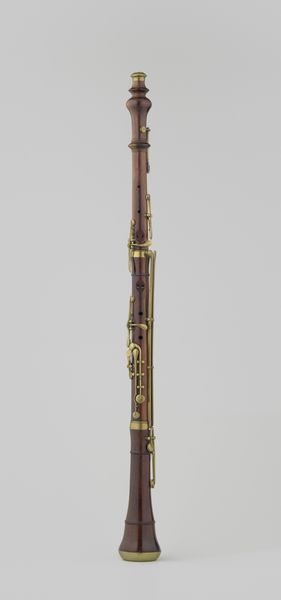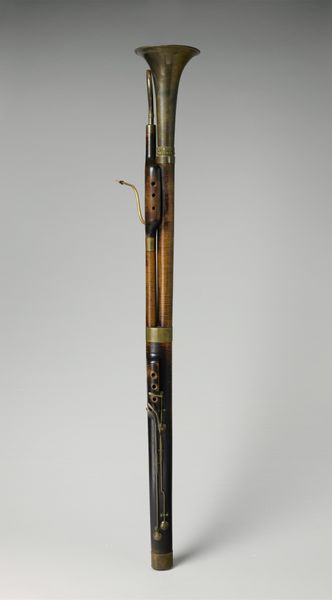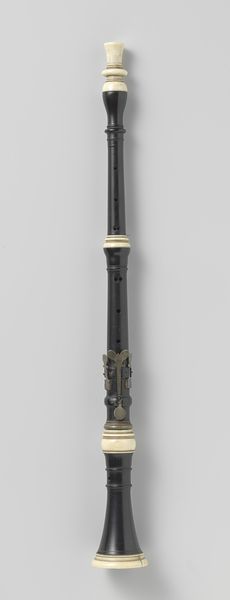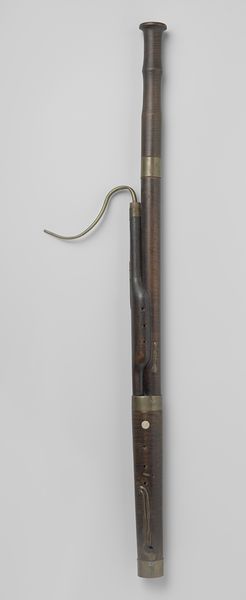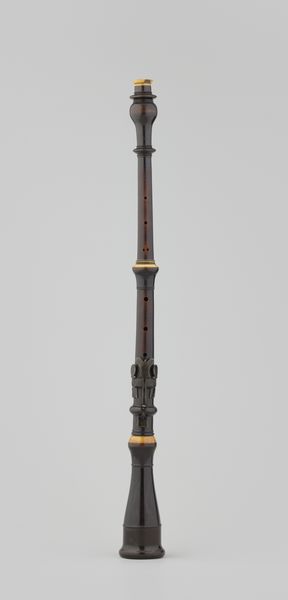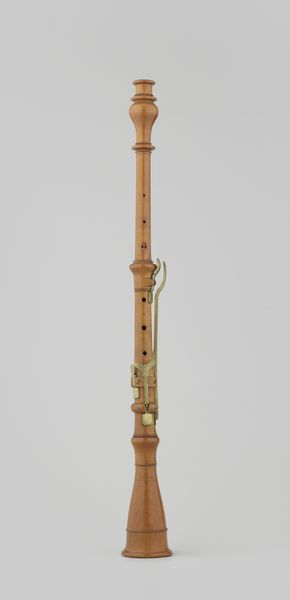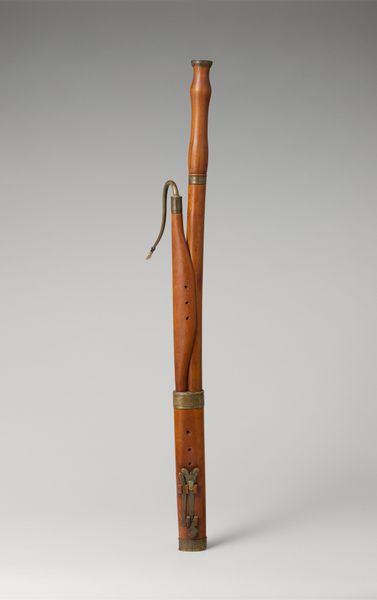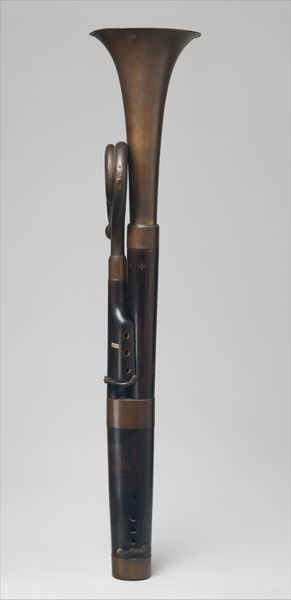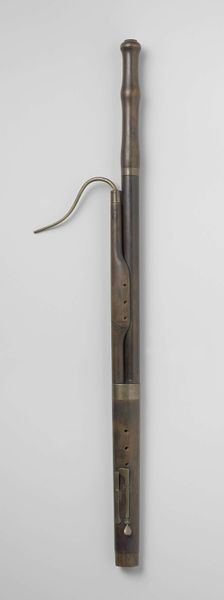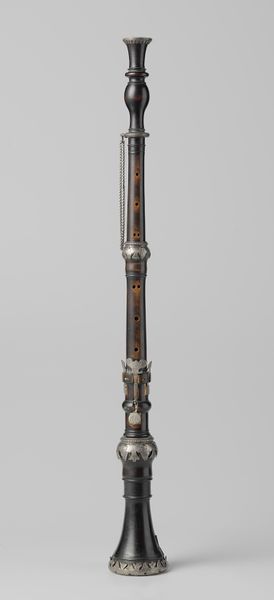
brass, sculpture, wood
#
brass
#
sculpture
#
wood
Dimensions: height 32.5 cm, diameter 24.0 cm, height 34.5 cm, width 25.0 cm, depth 3.4 cm, height 98.5 cm, width 13.0 cm, depth 10.0 cm
Copyright: Rijks Museum: Open Domain
Curator: My first impression? I’m immediately struck by a feeling of mechanical elegance, almost like a Victorian-era gadget but sonified. There’s a strange juxtaposition of the warm wood against the cooler, gleaming brass. Editor: Indeed! We're looking at a "Chromatic bass horn," crafted sometime between 1820 and 1830 by Johann Heinrich Gottlieb Streitwolf. Note the composition: the main body, constructed from wood, is complemented by brass keys and that rather imposing flared bell. Curator: Streitwolf, interesting name. Given the early 19th century context, the horn probably represents the ambition of the era – an attempt to marry complex mechanics with artistic expression. Do we know where these horns were typically played? Editor: Brass instruments, including this fascinating bass horn, held significant roles in military bands. They offered powerful sounds that could be heard over long distances outdoors. They also held important ceremonial value within civil society. The brass band became symbolic of communities marking both victory and somber occasion. Curator: The symbolism of brass as strength resonates strongly. Even today we associate it with power. But there’s also something else here; the combination of wood and brass implies perhaps a yearning for a deeper resonance, a bridge between nature and industrial progression. Brass brings a bold and focused sound while the wood grounds the horn adding warmth to its tones. Editor: It's quite interesting how the evolution of such instruments mirrors societal shifts. The bass horn gradually fell out of favor as more versatile instruments like the tuba emerged and orchestras grew in scale. The bassoon's capacity to generate sounds was more widely embraced throughout both classical compositions as well as ceremonial folk celebrations. The image offers us an opportunity to consider shifts in the broader public tastes. Curator: Exactly! This bass horn is more than an object; it’s a tangible connection to history, echoing the ambitions and artistic sentiments of the early 19th century. I'll be sure to listen closely if ever it speaks! Editor: Perhaps in listening to that imagined music, we can imagine a bit about those audiences then, as well as ourselves now, as art like this reminds us.
Comments
No comments
Be the first to comment and join the conversation on the ultimate creative platform.

